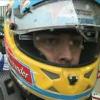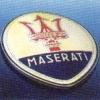A few OTTOMH:
Tony Rolt - captured at Calais 1940. Spent the war 'in the bag', escaped several times, ended up in Colditz, involved in the glider escape plot. Won two Military Crosses - for service in the defence of Calais and services rendered while a PoW.
Leslie Brooke - George Medal for gallantry during a rescue as a member of the ARP.
Bira and Chula - both served in the Home Guard. Bira later joined the RAFVR as a glider pilot/instructor. Wanted to be a pilot, but eyesight not good enough! Chula was prominent in the Free Thai movement in Britain.
Whitney Straight - served in the RAF, shot down, escaped, ended the war as an Air Commodore.
Reggie Tongue - RAF in Britain and West Africa, test pilot for Rolls Royce.
René Dreyfus - French army reservist on the Western Front, serving with the comedian Fernandel. Given leave of absence to race at Indianapolis 1940, discharged in America after the fall of France. Later served in the US army, in North Africa, Italy and France.
René Le Bègue - tank officer in the French army. As with Dreyfus, given leave of absence for Indy 1940. Returned to France, then back to the USA for Indy 1941. Remained in the US (hoping to race in 1942!) Later joined the Free French forces.
Harry Schell - US army.
Jean-Pierre Wimille - French Armée de l'Air. Demobbed 1940. Later worked with 'W Williams' and Robert Benoist in the French Resistance. Several other French racers were involved in Resistance activities - a few were killed (see Tim's link).
Arthur Dobson - RAF, but 'let go' for unspecified reasons (possibly drink!) Was running a company 'in radio' in 1944 according to Motor Sport.
Malcolm Campbell - trained motorcyclists for the British army. Was involved in the collection and analysis of beach sand samples in the preparations for the invasion of Europe.
John Cobb - served in the RAF. Has a very small 'bit part' in the film Target for Tonight, which featured real RAF personnel.
Raymond Sommer - French army, Demobbed 1940. Some reports say he was briefly in a PoW camp in Germany.
Louis Chiron - decamped to his home in Switzerland. May have been involved in Resistance work.
Pete dePaolo - USAAF. Posted to Switzerland and was responsible for the welfare of US aircrews who had force-landed there and were interned. Renewed acquaintance with Caracciola and was instrumental in the invitation for him to race at Indy in 1946.
Manfred von Brauchitsch - desk job in the Wehrmacht. Allegedly did some tank testing. Ended the war in a sanatorium.
Hermann Lang - worked for Mercedes Benz throughout the war in technical roles. Also did some lecture tours with Alfred Neubauer. Hans Stuck did similar lecture work and film shows.
Quite a few British drivers - due to mechanical expertise or because they were company directors - would have been in 'reserved occupations', so would not have served, except perhaps in the Home Guard, the Observer Corps, ARP or Auxiliary Police.

















